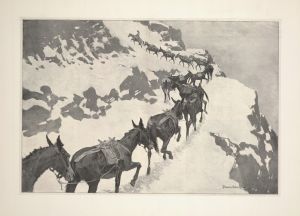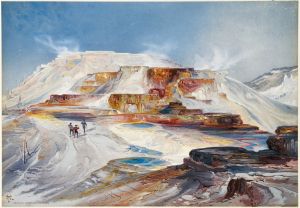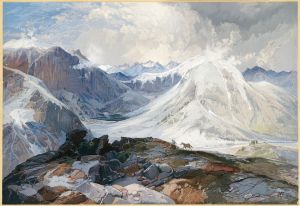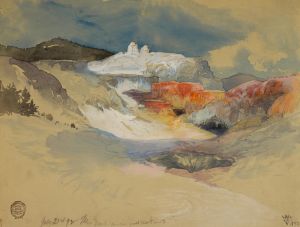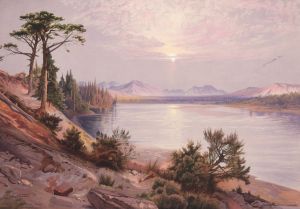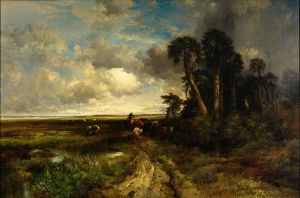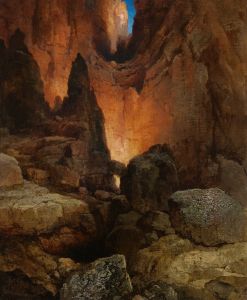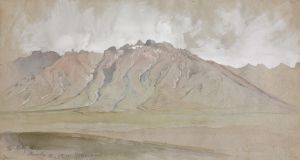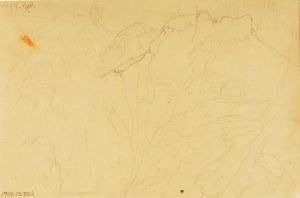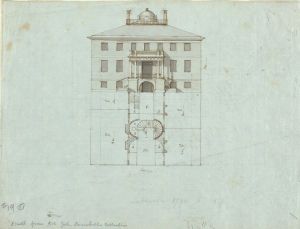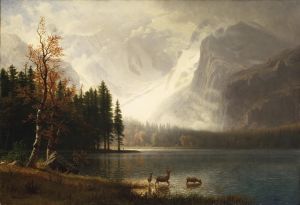
The Mosquito Trail, Rocky Mountains of Colorado, Elevation 12,000 feet.
A hand-painted replica of Thomas Moran’s masterpiece The Mosquito Trail, Rocky Mountains of Colorado, Elevation 12,000 feet., meticulously crafted by professional artists to capture the true essence of the original. Each piece is created with museum-quality canvas and rare mineral pigments, carefully painted by experienced artists with delicate brushstrokes and rich, layered colors to perfectly recreate the texture of the original artwork. Unlike machine-printed reproductions, this hand-painted version brings the painting to life, infused with the artist’s emotions and skill in every stroke. Whether for personal collection or home decoration, it instantly elevates the artistic atmosphere of any space.
"The Mosquito Trail, Rocky Mountains of Colorado, Elevation 12,000 feet" is a painting by the renowned American artist Thomas Moran. Thomas Moran, born in 1837 in Bolton, England, was a pivotal figure in the Hudson River School of art, a movement known for its romantic portrayal of the American landscape. Moran is particularly celebrated for his depictions of the American West, which played a significant role in shaping public perception and appreciation of these vast, untamed landscapes during the 19th century.
This particular painting captures the rugged beauty of the Mosquito Range, a high mountain range in the central Rocky Mountains of Colorado. The range is known for its challenging terrain and high elevations, with several peaks exceeding 13,000 feet. The Mosquito Trail itself is a historic route that traverses this mountainous region, offering dramatic views and a glimpse into the natural splendor that characterizes much of Moran's work.
Moran's painting is notable for its meticulous attention to detail and its ability to convey the grandeur and majesty of the Rocky Mountains. The elevation of 12,000 feet, as indicated in the title, suggests that Moran was interested in capturing the high-altitude environment, which is characterized by its unique light, atmospheric conditions, and rugged topography. The painting likely features a combination of towering peaks, expansive skies, and perhaps the flora and fauna typical of such elevations.
Thomas Moran's work was instrumental in the establishment of the National Parks in the United States. His paintings of the Yellowstone region, for example, were influential in convincing Congress to establish Yellowstone as the first National Park in 1872. While "The Mosquito Trail" may not have had the same direct impact, it contributes to Moran's legacy of highlighting the natural beauty of the American landscape and advocating for its preservation.
Moran's technique often involved the use of vibrant colors and dramatic contrasts to evoke the emotional and sublime qualities of the landscapes he depicted. His work is characterized by a romantic sensibility, emphasizing the awe-inspiring and sometimes overwhelming aspects of nature. This approach aligns with the broader goals of the Hudson River School, which sought to capture the spiritual and transcendent qualities of the American wilderness.
"The Mosquito Trail, Rocky Mountains of Colorado, Elevation 12,000 feet" exemplifies Moran's skill in rendering the intricate details of the natural world while also conveying a sense of scale and grandeur. His paintings continue to be celebrated for their artistic merit and their role in fostering an appreciation for the natural beauty of the United States.
Today, Thomas Moran's works are held in high regard and can be found in major art institutions across the country, including the Smithsonian American Art Museum and the National Gallery of Art. His contributions to American art and conservation remain influential, and his paintings continue to inspire viewers with their breathtaking depictions of the American landscape.





